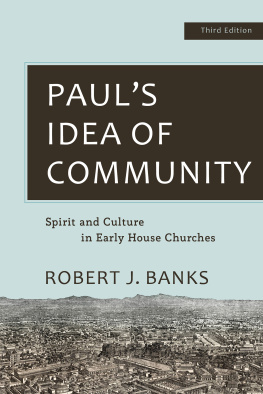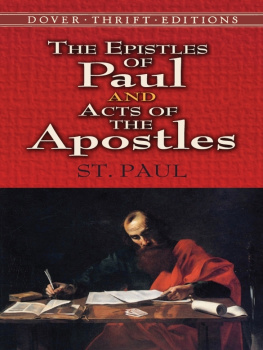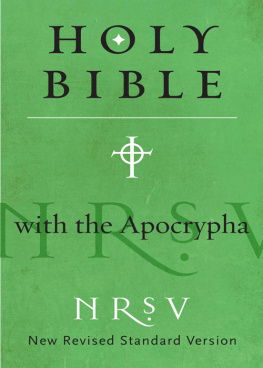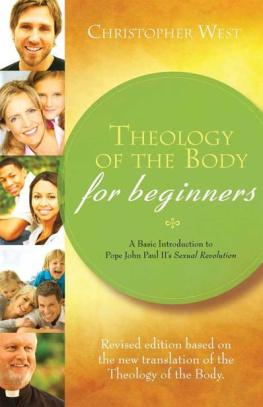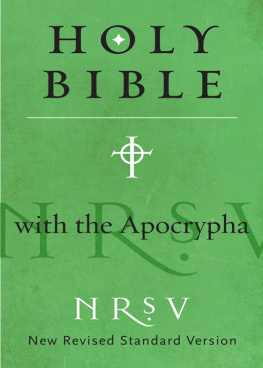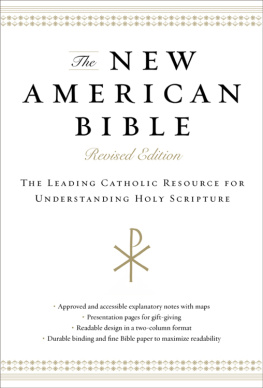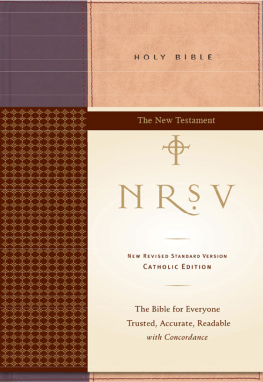
1995 by Robert J. Banks
Published by Baker Academic
a division of Baker Publishing Group
P.O. Box 6287, Grand Rapids, MI 49516-6287
www.bakeracademic.com
Previously published in 1994 by Hendrickson Publishers, Inc. Baker Academic ebook edition created 2012.
All rights reserved. No part of this publication may be reproduced, stored in a retrieval system, or transmitted in any form or by any meansfor example, electronic, photocopy, recordingwithout the prior written permission of the publisher. The only exception is brief quotations in printed reviews.
eISBN 978-1-4412-3713-2
Library of Congress Cataloging-in-Publication Data is on file at the Library of Congress, Washington, DC.
Cover Art: Rick Beerhorst. Birds in the Window. 2004. Block Print. Photo Credit: 2007 Rick Beerhorst | Eyekons www.eyekons.com. Used with permission.

TABLE OF CONTENTS

ABBREVIATIONS
The usual abbreviations are employed for books of the Bible and literary terms.
Books of the Apocrypha |
Ecclus | Ecclesiasticus (Sirach) |
Jud | Judith |
1 Macc | 1 Maccabees |
2 Macc | 2 Maccabees |
Wisd | Wisdom of Solomon |
Pseudepigrapha |
Apoc. Mos. | Apocalypse of Moses |
Arist. | Letter of Aristeas |
2 Bar. | 2 Baruch |
1 En: | 1 Enoch |
Jub. | Jubilees |
3 Macc. | 3 Maccabbees |
Sib. Or. | Sibylline Oracles |
Test. Lev. | Testament of Levi |
Dead Sea Scrolls |
CD | The Damascus Rule |
1QH | The Thanksgiving Hymns |
1QM | The War Scroll |
1QS | The Community Rule |
Mishnah |
A b . | A both |
A rak . | A rakhin |
B. M. | B aba M etzia |
B er . | B erakoth |
D em . | D emai |
E duy . | E duyoth |
G itt . | G ittin |
H ag . | H agigah |
K et . | K etuboth |
K idd . | K iddushin |
M akk . | M akkoth |
M. S h . | M aaser S heni |
M eg . | M egillah |
P ea | P eah |
P es . | P esahim |
R. S h . | R osh-ha -S hanah |
S habb . | S habbath |
S ot . | S otah |
S ukk . | S ukkah |
T aan . | T aanith |
T am . | T amid |
Y eb . | Y ebamoth |
Y om . | Y oma |
Tosephta |
B er . | B erakoth |
Miscellaneous |
LXX | Septuagint |
RSV | Revised Standard Version |

PREFACE TO THE
ORIGINAL EDITION
This is not a technical book, nor a popular one either. We already have a number of stimulating technical works on Pauls view of the church, and many popular books on church life build on aspects of Pauls view in their presentation. But the former are too linguistically daunting for most readers, while the latter are too particular in their emphasis or psychological in their orientation to be fully satisfactory as treatments of Paul. I have written he speaks more relevantly about community than representatives of the counter-culture groups and church structures. Meanwhile the sociologists of religion are beginning to discover that Paul is someone with whom they have not yet fully come to terms. Initially this book contained additional material for those who have such interests, but I did not have enough space to carry this through properly. Still, those who wish to explore further the sociological character of Pauls ideas will find here much that is helpful. And those seeking a more precise identification of the culturally conditioned and permanently relevant aspects of his thought will discover much to help them. At a later stage I hope to give more concentrated attention to these two areas.
Though this is not a technical work, it is based on a thorough investigation of the relevant primary and secondary sources, and suggests a number of new interpretations of the material involved. My first inquiries were made more than fifteen years ago and in varying degrees the subject has preoccupied me ever since. Almost five years have passed since a first draft of part of this book was completed and it has gone through many revisions before reaching its present form. For me, interest in Pauls view has been stimulated not only by reading and thinking about it at an academic level, but also by involvement in groups which feel what Paul said still has continuing relevance for their community life. We learn about the past not just by rational reflection upon it, but also by personal involvement in those aspects of our present which have common links with it. This is true not only for people in general but for those of us who are historians as well. It sharpens the questions we ask of the past and deepens our empathy with it. Since the book does contain several new lines of thought, sets Pauls ideas in a broader historical context than is customary and approaches him as a social thinker rather than a systematic theologian, I hope it will be read by some biblical scholars, ancient historians and historians of ideas, as well as those for whom it is chiefly designed.
In setting out the footnotes and bibliography I have borne in mind those who will mainly use them. References to secondary works have been excluded from footnotes to avoid unnecessarily weighting the presentation. Instead I have provided a carefully chosen bibliography, geared around the main themes of the book. This includes works supporting in more detail many lines of argument within it, broader treatments of various aspects of Pauls view and alternative views to those I have advocated. Certain references to primary sources will be found for convenience in the text but longer sets of references will generally be found in the footnotes. Citations are comprehensive as far as Pauls writings are concerned. Other contemporary documents are cited representatively, since here I am summarizing bodies of evidence rather than treating them exhaustively. In view of the relative inaccessibility of some sources, e.g. collections of Greek papyri and inscriptions and some rabbinic commentaries and codes, I have referred only to those which the general reader will find more readily available. Those specialists who wish to consult the more technical sources should not have any difficulty finding the required references. These are in the books mentioned in the bibliography accompanying each chapter. However, where more inaccessible items have been gathered into anthologies such as C. K. Barretts collection of background documents to the New Testament, I have included reference to them. At the close of the book there is also a glossary containing descriptions of the main figures, works and movements cited in the text and footnotes for those who may be unfamiliar with them.
Next page

